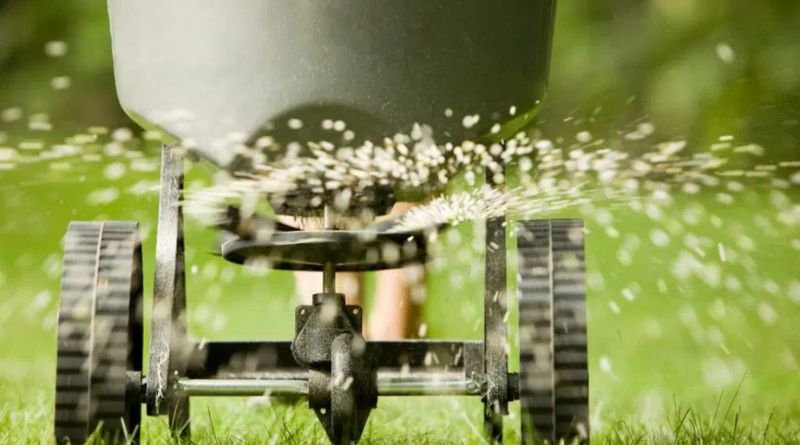Important Takeaways
- Based on your lawn’s particular needs, soil testing will assist you in choosing the best fertilizer.
- Compared to alternative methods, organic fertilizers offer soil enrichment that is both safer and more durable.
- Using sustainable lawn care practices, such as appropriate mowing and watering methods, will improve the health of your lawn.
- A resilient ecosystem will be produced by integrating native plants and promoting biodiversity.
Environmental responsibility does not have to be sacrificed for a healthy lawn. By using eco-friendly techniques that emphasize sustainability and aesthetics, you can create a green, flourishing yard. Choosing the right lawn fertilization services is important because it provides the precise nutrients your lawn requires by fusing expert knowledge with eco-friendly practices. Responsible lawn care techniques improve soil health, biodiversity, and water storage, all of which contribute to the long-term health of the lawn and the wellbeing of the local ecosystem. People’s yards and communities benefit from the eco-friendly practices they uphold on their own or with the help of lawn fertilization services.
Soil Testing: The First Step to Effective Fertilization
Understanding the full makeup of your soil is the first step towards applying the right fertilizer. To find possible deficiencies, nutrient imbalances, and pH problems, a soil test should be carried out prior to fertilization. Soil testing is a crucial step in preventing overfertilization, which can contaminate water and cause pollution. By using soil testing, you can fertilize your lawn only as needed, improving plant health and lessening your impact on the environment. Reliable information regarding soil testing methods can be found in the EPA soil bioavailability guidance.
Choosing Organic Fertilizers for a Healthier Lawn
Organic fertilizers including compost and bone meal and manure decompose naturally to provide gradual nutrient delivery to soil. Organic fertilizers provide essential nutrients to the soil while enhancing soil structure and encouraging beneficial microbial growth. The organic matter in your lawn helps retain water while promoting root growth and preventing fertilizer from escaping into nearby streams and waterways. Better Homes & Gardensresearch shows organic lawn fertilization produces sustainable and resilient lawn health results.
Mowing and Watering: Techniques for Sustainable Growth
Mowing and watering techniques are crucial to sustainable lawn care, but they are rarely acknowledged. Your mower’s blade should be set to 3 inches in order to prevent weeds, encourage deep root development, and keep the soil moist rather than allowing it to evaporate. Never mow your grass longer than one-third of the blade length because this promotes robust, healthy growth and helps plants recover from stress. In order to make drought-resistant lawns, deep and infrequent watering should be done once a week to provide an inch or so of moisture. Early in the morning is the ideal time to water your lawn because it reduces fungus infections and evaporative water loss.
Incorporating Biodiversity for Lawn Resilience
To make your lawn more resilient, incorporate pollinator plants, wildflowers, and native plants. In addition to improving natural pest control and fostering more diverse ecosystems, the plants draw beneficial insects and birds. Native plant species need little fertilizer, water, or upkeep and flourish in the climate and soil conditions of your area. A lawn that has a variety of grasses or groundcover plants will be less susceptible to pests and diseases, making it more aesthetically pleasing and sustainable.
Timing and Application: Best Practices for Fertilizer Use
Both grass growth and environmental preservation depend heavily on the proper timing of fertilization. When growth peaks in early fall and late spring, cool-season grasses like fescue and bluegrass are best suited for fertilization. Late spring to early summer is the ideal time of year to fertilize warm-season grasses, such as zoysia and Bermuda. Always adhere to the recommended application rate, and avoid applying fertilizer right before a lot of rain, as this stops nutrients from entering storm drains and contaminating water. Fertilizer recommendations from Consumer Reports include comprehensive details regarding application rates and scheduling.
Grasscycling: Recycling Nutrients Naturally
After mowing, lawn clippings are left on the grass as part of the grasscycling practice. Clipping decomposition reduces the need for chemical fertilizers while releasing beneficial nitrogen and other soil nutrients. Grasscycling helps protect water resources and landfills and saves time because the clippings act as a moisture-retaining layer. When cutting dry grass, the best results come from short clippings because they break down quickly without damaging the turf.
Water Conservation Strategies in Lawn Care
The practice of proper watering methods reduces expenses while safeguarding the environment. The lawn should receive its water supply during early morning hours while you track water usage with a rain gauge and store rainwater in barrels to provide lawn irrigation. Select grass species that tolerate drought conditions while you establish your watering schedule according to local weather patterns.
Monitoring and Adjusting: Ensuring Long-Term Lawn Health
A lush resilient lawn requires repeated observation and regular maintenance. Check your lawn frequently for signs of stress which include discoloration and soft spots and excessive weed growth. When problems arise you should handle them responsibly through integrated pest management or other organic solution strategies if they are available. A tracking device and a great tool for making informed changes to achieve lasting lawn health is keeping records of your watering, mowing and fertilizing measures.
